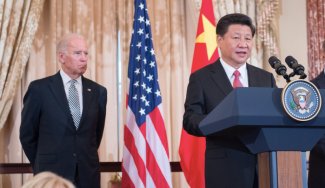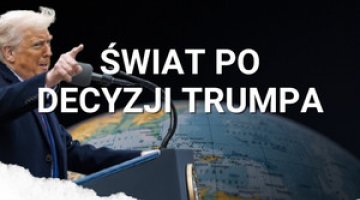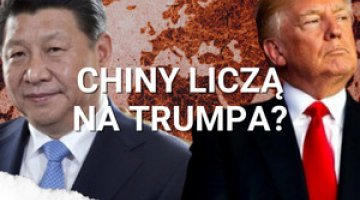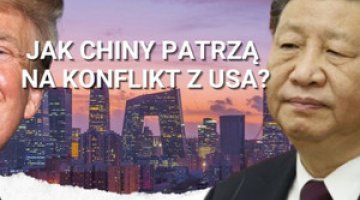Biden’s policy towards China: the prospects for transatlantic dialogue

Joe Biden’s victory in the US presidential election means that Washington will continue its confrontational policy towards Beijing. At the same time, it will clearly change its tactics and attempt to mobilise the US’s network of alliances to contain China. On 13 November, China congratulated Biden and Kamala Harris, but highlighted the need to resolve possible legal disputes. The expected change in the US administration has been widely commented upon in the Chinese press. The initial reactions from China reveal expectations that competition with Washington will continue in almost all key areas, although Beijing hopes to unblock some channels for diplomatic contacts. It also expects an extensive US-EU dialogue to begin discussing what actions should be taken with regard to the PRC. The first reactions from Europe suggest that this scenario is very likely. Biden’s victory has been presented as an opportunity for a joint response to the challenges linked to China by Heiko Maas, the German foreign minister, and some representatives of Brussels. However, creating a common front on Beijing will require a number of structural problems in transatlantic relations to be resolved, including in the areas of trade and services, digital technologies and security.
The Biden administration’s policy towards China will continue the multidimensional rivalry that the presidency of Donald Trump has permanently inscribed in US strategy. This trend is the subject of US bipartisan consensus. Furthermore, in recent years, both the presidential administration and the Congress have become involved in measures aimed against the PRC. China’s actions are also guided by the logic of structural conflict. It has no hope that Biden’s presidency will help in easing its relations with the US, and now sees the confrontation as a permanent trend resulting from a fundamental divergence of interests. In the run-up to the election, Beijing stepped up its aggressive actions in the Indo-Pacific area, and also took steps to become technologically and economically independent from the United States. The first Chinese press comments hinted at the possibility of improving communication with Washington, in order to reduce the risk of an uncontrolled escalation of military tension in the Pacific and bring about limited talks on climate and trade. Biden’s policy will therefore be determined by both the US establishment’s expectations that his administration will be more effective in containing China than Trump’s was, and by Beijing’s growing assertiveness on the international stage.
A change in American tactics
As regards US security policy, the containment of China’s military expansion, including increasing the US’s presence in the Indo-Pacific region, is likely to remain among the top priorities. Co-operation within the QUAD format (the United States, Japan, India, Australia) will probably be stepped up. Support for Taiwan, which may become the most heated point in the China-US rivalry in the Western Pacific, will also be continued. As the role of NATO is expected to strengthen under Biden’s administration, Washington may seek to use it to a greater extent for political coordination against Beijing, and for improving the allied states’ resilience towards threats related to the PRC.
The Trump administration strongly criticised the Chinese Communist Party as a totalitarian and undemocratic organisation, but Trump’s actions were mostly rhetorical. In the case of the Biden administration, human rights and democracy may become a real platform for international co-operation regarding China and the basis for imposing more severe sanctions on it (e.g. with regard to the situations in Hong Kong, Xinjiang or Taiwan), including by creating broader coalitions among allies.
There is currently a consensus in the US about the fundamental threats related to the pace of PRC technological development. Advanced technologies are crucial in terms of security, economic competitiveness, and the functioning of democratic countries. Trump’s campaign against Chinese technological companies (including Huawei, Hikvision and TikTok) has so far generally been assessed in the United States as effective, including by the Democrats. More instruments aimed at cutting off Chinese companies from components and technologies, striking at their supply chains, reducing access to the US and allied markets, etc. are likely to be introduced and developed under the Biden administration. However, there may be changes in some emphases, and to the priority technologies selected. Furthermore, supplies of components in less sensitive areas from the US to China will most likely continue, due to pressure from the relevant American business groups.
The biggest policy change should be expected in the area of the US’s trade policy towards the PRC. There is relative consensus among the Democrats that Trump’s customs wars have been ineffective in forcing Beijing to make structural economic concessions, although it is unlikely that any tariffs will be lifted. It is very probable that Biden will test the effectiveness of a return to the use of multilateral institutions and trade agreements in order to ‘encircle’ China economically and creating a separate economic co-operation frameworks for the developed countries, to which China will have no access. This may be manifested by attempts to reform multilateral organisations, including the World Trade Organisation (WTO), as well as a possible return to regional trade agreements similar to TTP or the TTIP. However, the key question is whether Washington will find partners for similar initiatives among the Indo-Pacific and EU countries. Moreover, such initiatives must also be supported by Congress.
Mobilising America’s alliances
Given the priorities mentioned above, the new presidential administration is likely to establish broader co-operation on China with like-minded nations in the following several months. Relations with the Indo-Pacific region (Japan, India, Australia) had already been developed quite intensively during the Trump presidency, so the search for a ‘new start’ will mainly concern the countries of the European Union. The US will want to draw the EU into as many fields of rivalry with the PRC as possible, including security policy (examples would include NATO reforms regarding a joint response to threats from China, and increasing European countries’ defence spending), technological policy (including the regulation of digital markets) and defending human rights. The US will probably also be much more active in the issues of global climate agreements; this would facilitate coordination on the connectivity undertaken by the United States and the European Union in developing countries.
The US-EU dialogue on China may be successful, considering the high convergence of their economic interests regarding China. These include the common goal of curbing Beijing’s unfair trade practices, through WTO reforms among other multilateral means. The awareness of the risk linked to the expansion of Chinese digital corporations has increased in numerous EU member states (including France, Scandinavia and Central Europe), as well as in the EU’s institutions. In 2020, as a result of China’s actions during the COVID-19 pandemic, its aggressive diplomacy and the de facto liquidation of Hong Kong’s autonomy, voices inside the EU calling for a more assertive policy towards China have strengthened significantly. These trends have contributed to the EU-US dialogue, and led to the US Secretary of State Mike Pompeo and the High Representative of the European Union for Foreign Affairs and Security Policy Josep Borrell meeting this October for the first time to discuss the issue of China.
Challenges to transatlantic dialogue on China
However, any effective dialogue on China will require at least some of the bilateral tensions between the United States and the EU to be resolved. Washington will have to present a more partner-like approach based on multilateralism so that talks can begin. Many issues related to China also require the resolution of long-term conflicts strictly related to US-EU relations, including the predomination of US digital corporations in the EU, reforms of the European security system, the US returning to climate agreements, and the easing of trade tensions. There is a strong desire in some EU member states, especially in France and Germany, to resolve these issues without American participation by building up a European ‘strategic autonomy’ or ‘digital sovereignty’.
The success of such dialogue will also depend on the EU’s ability to adopt a common stance on China, which will be necessary for the talks with the US to be effective. This was supposed to be one of the priorities of the German presidency of the EU, but due to the pandemic – and also the lack of consensus on this issue within Germany itself – work on achieving this goal clearly slowed down. Despite the shift to a more assertive tone in the European debate, and also the branding of China in official communiqués as a ‘competitor’ and ‘systemic rival’, the EU’s more confrontational plans have still not been put into practice. This would require not only the adoption of a consensus in the area of EU foreign policy towards the PRC, but also discussions on the shape and level of openness of the common EU market, as well as the future of the community’s industrial policy. So far, Beijing has successfully capitalised on the differences within the EU, focusing inter alia on bilateral relations with the largest countries. However, since the outbreak of the COVID-19 pandemic and the end of Hong Kong’s autonomy, the effectiveness of Chinese diplomacy in Europe has clearly decreased.
Given the difficulties outlined above, the attempts to find a transatlantic compromise on China may only partially succeed. In the first phase, the talks will concern reforms of the trade system, co-operation in the field of human rights, the regulation of the digital economy, climate policy, and connectivity with developing countries. This would create an opportunity to implement the Polish stance on selected issues at the level of EU relations. At the same time, Warsaw’s failure to take proactive measures in these areas carries the risk that Washington will seek an agreement with Germany and France at the expense of Poland’s interests. If the most important EU countries are not ready to compete with China in areas of key importance to the US, after some time the Biden administration may partially resume Trump’s policy, call the special importance of the transatlantic relationship into question, and try to capitalise on the differences between individual EU member states, especially by increasing its appreciation of the Central European approach.




